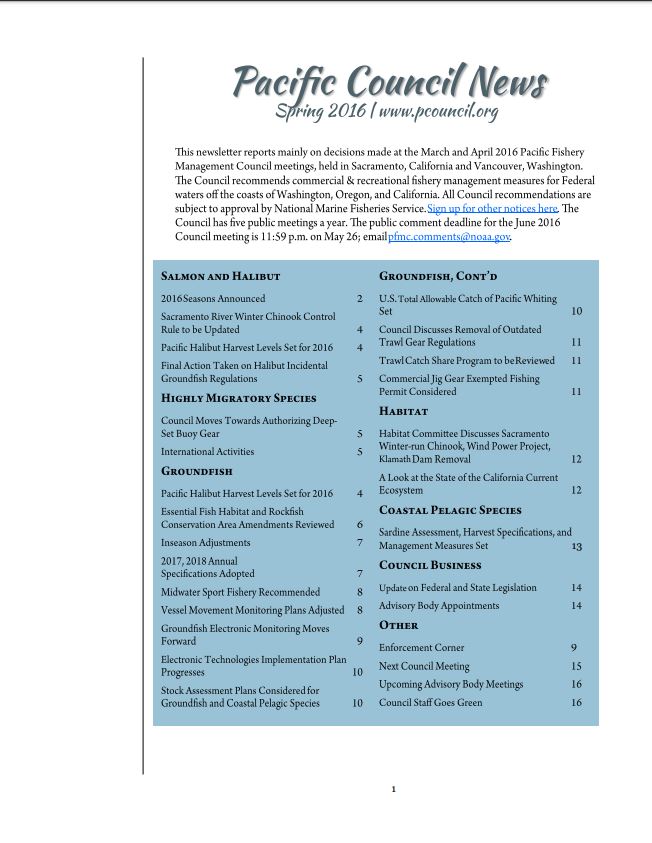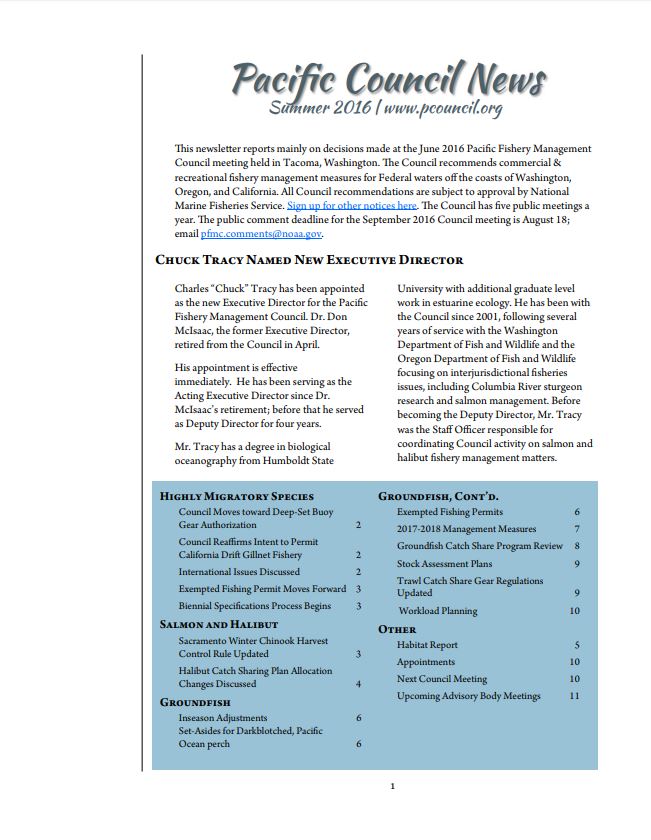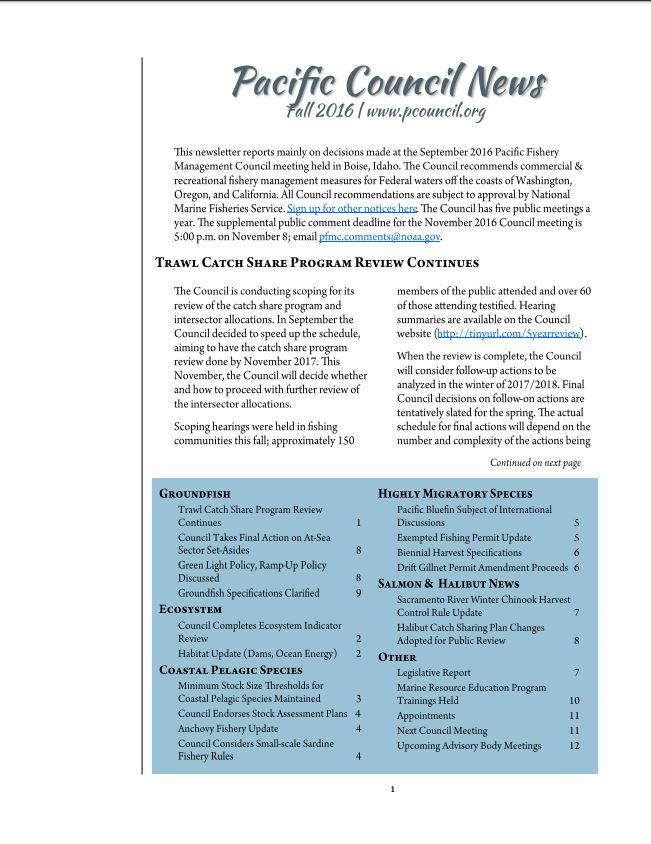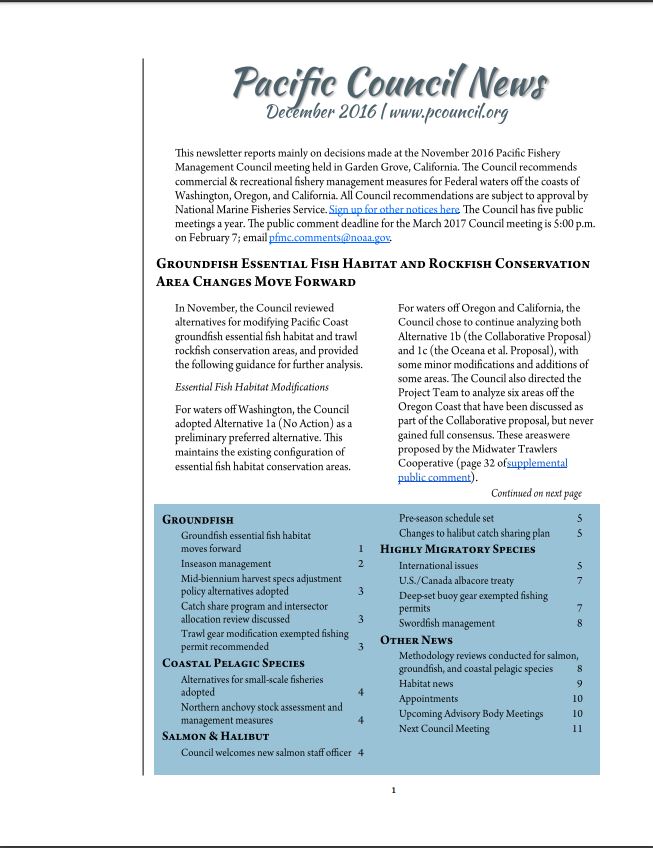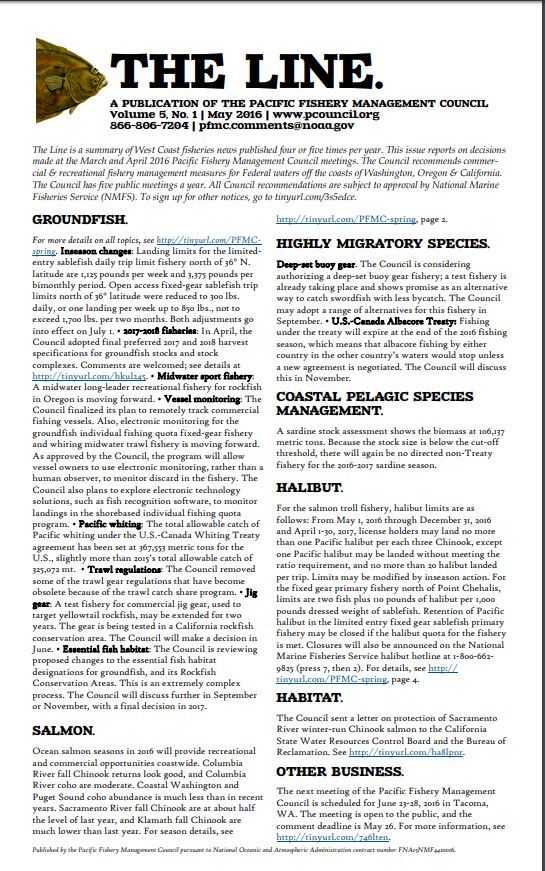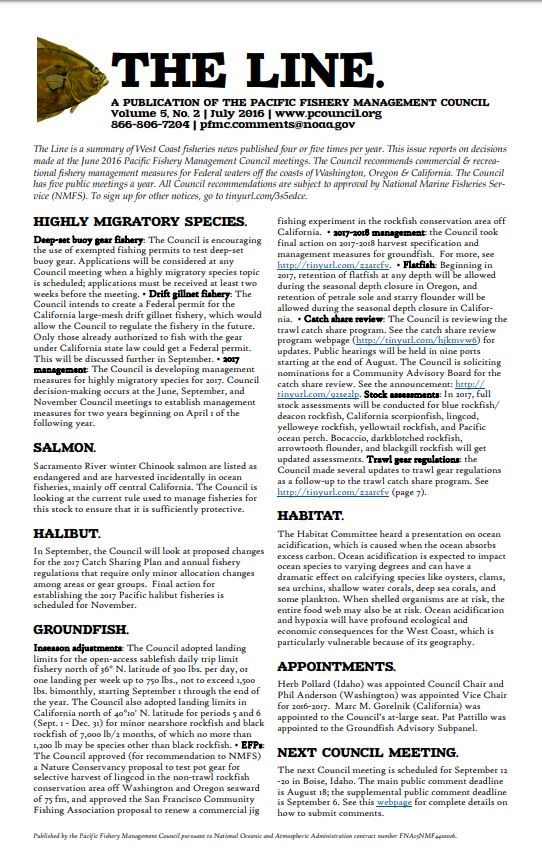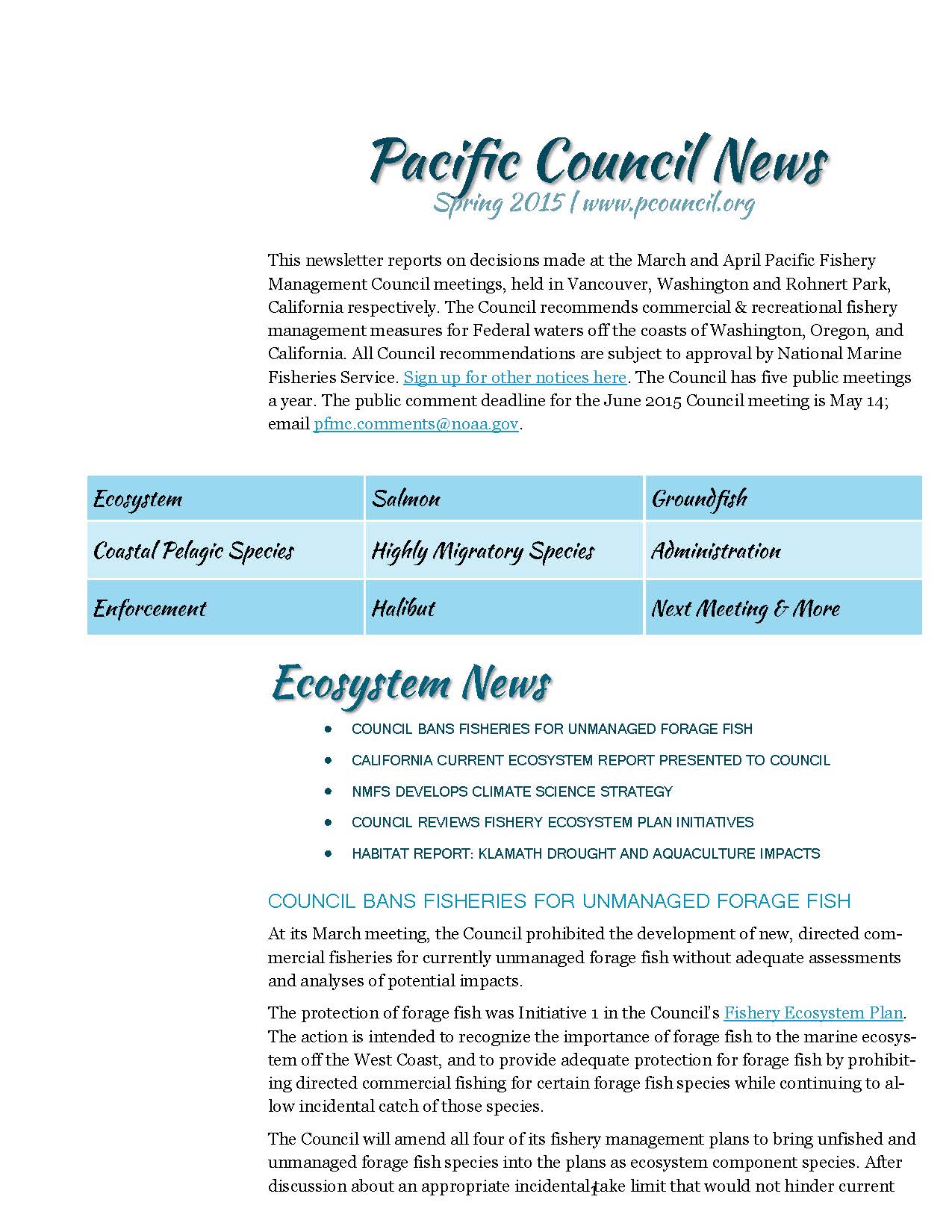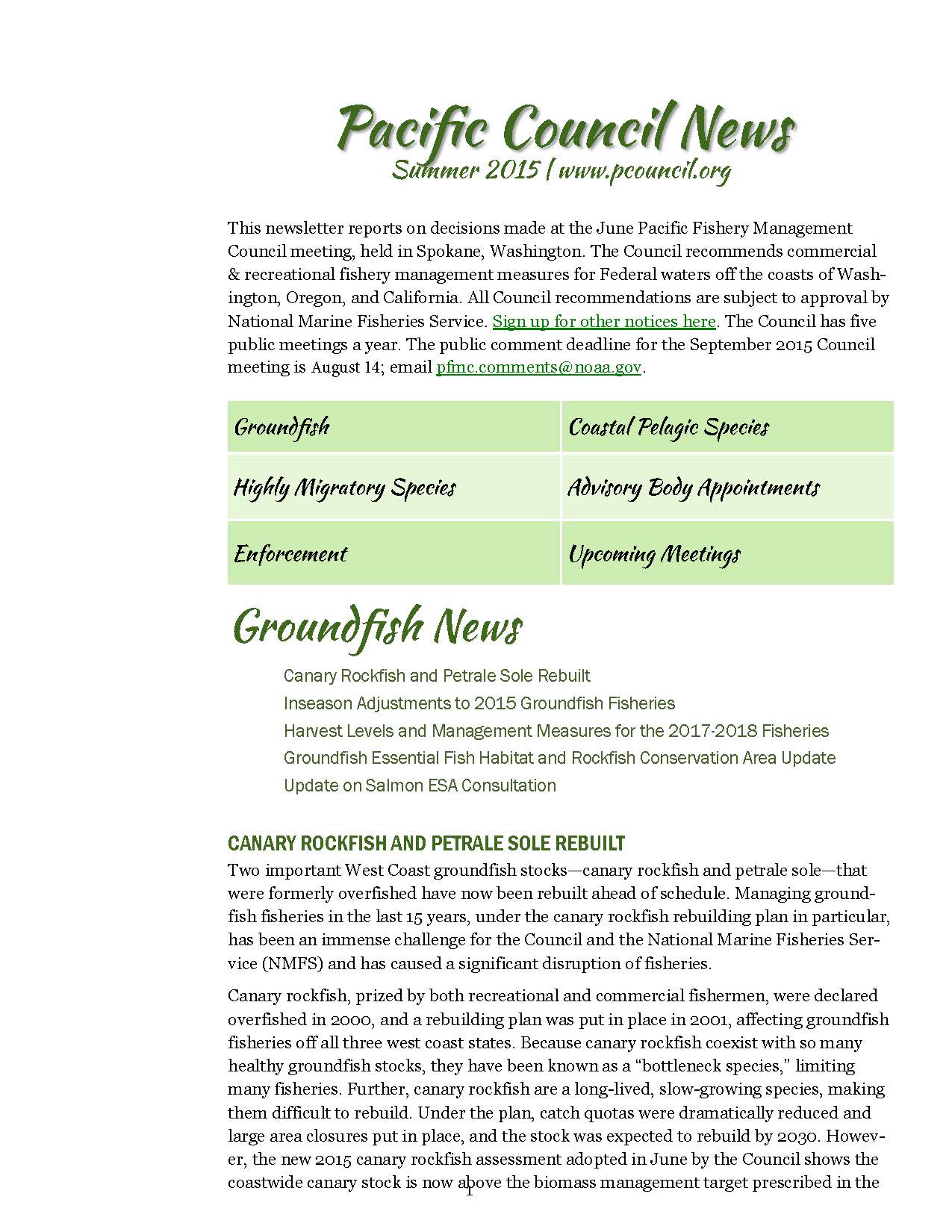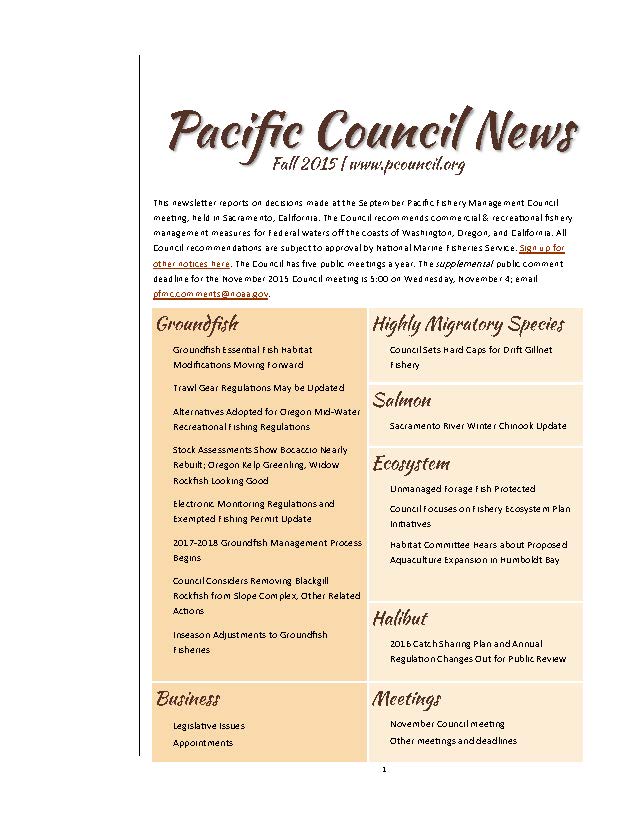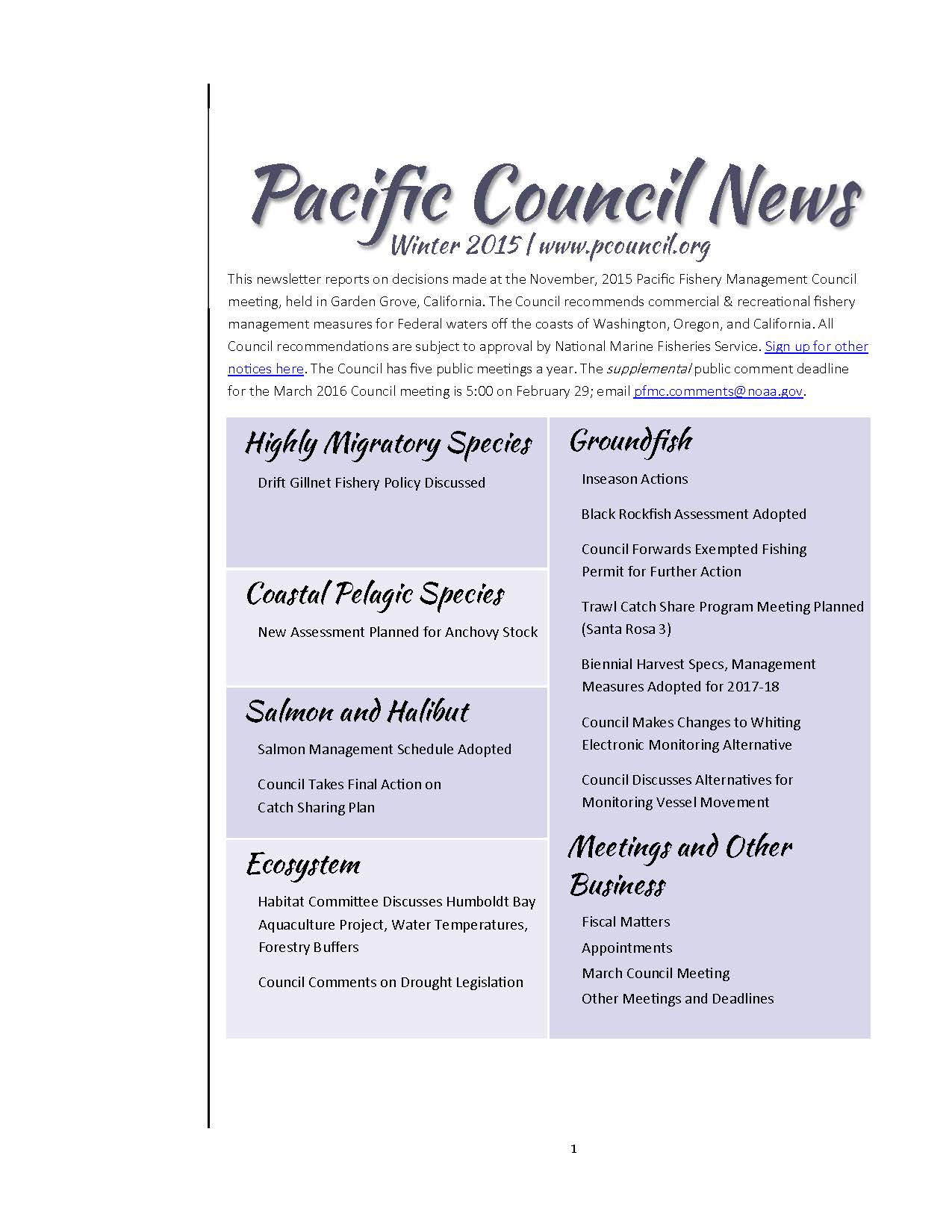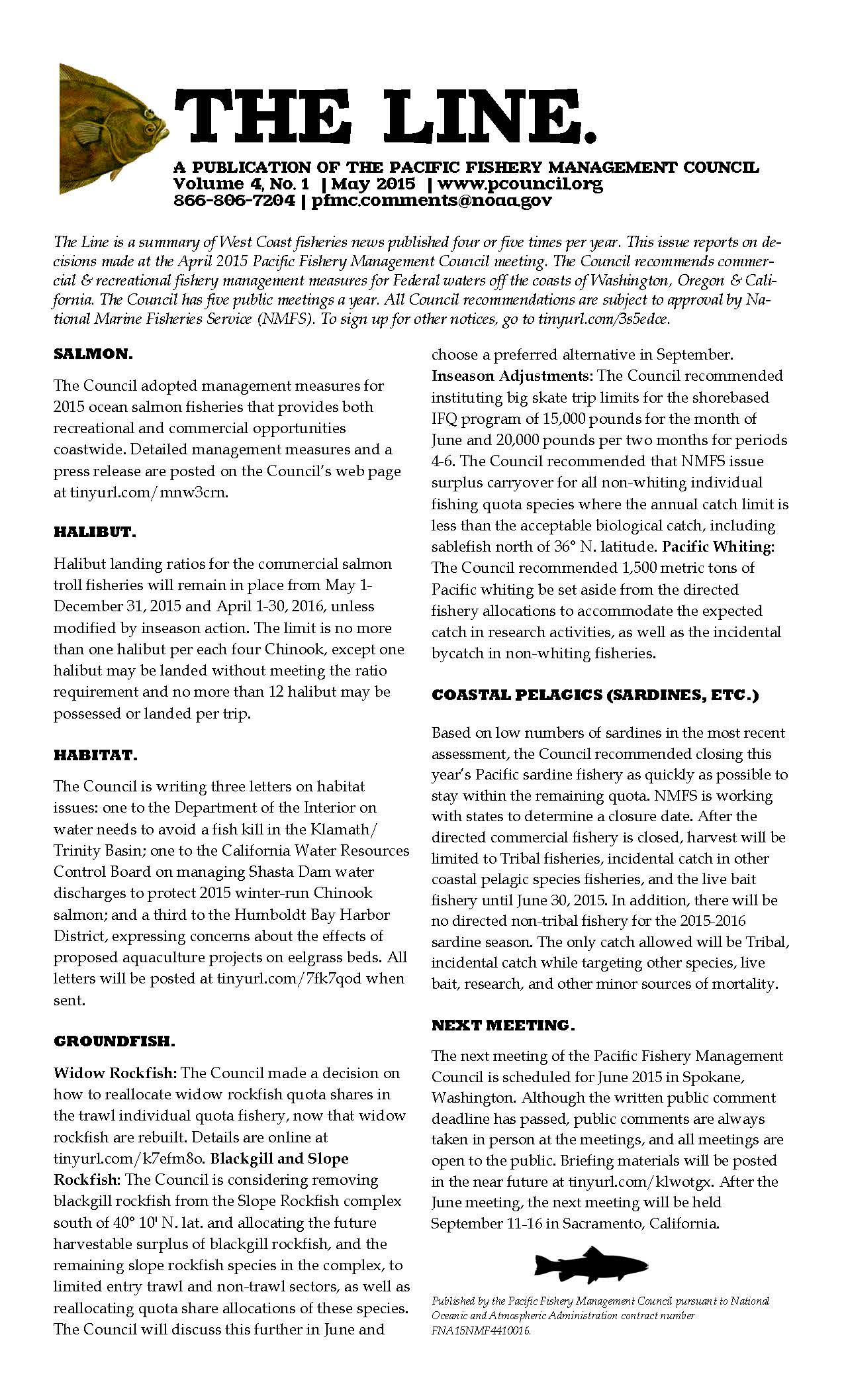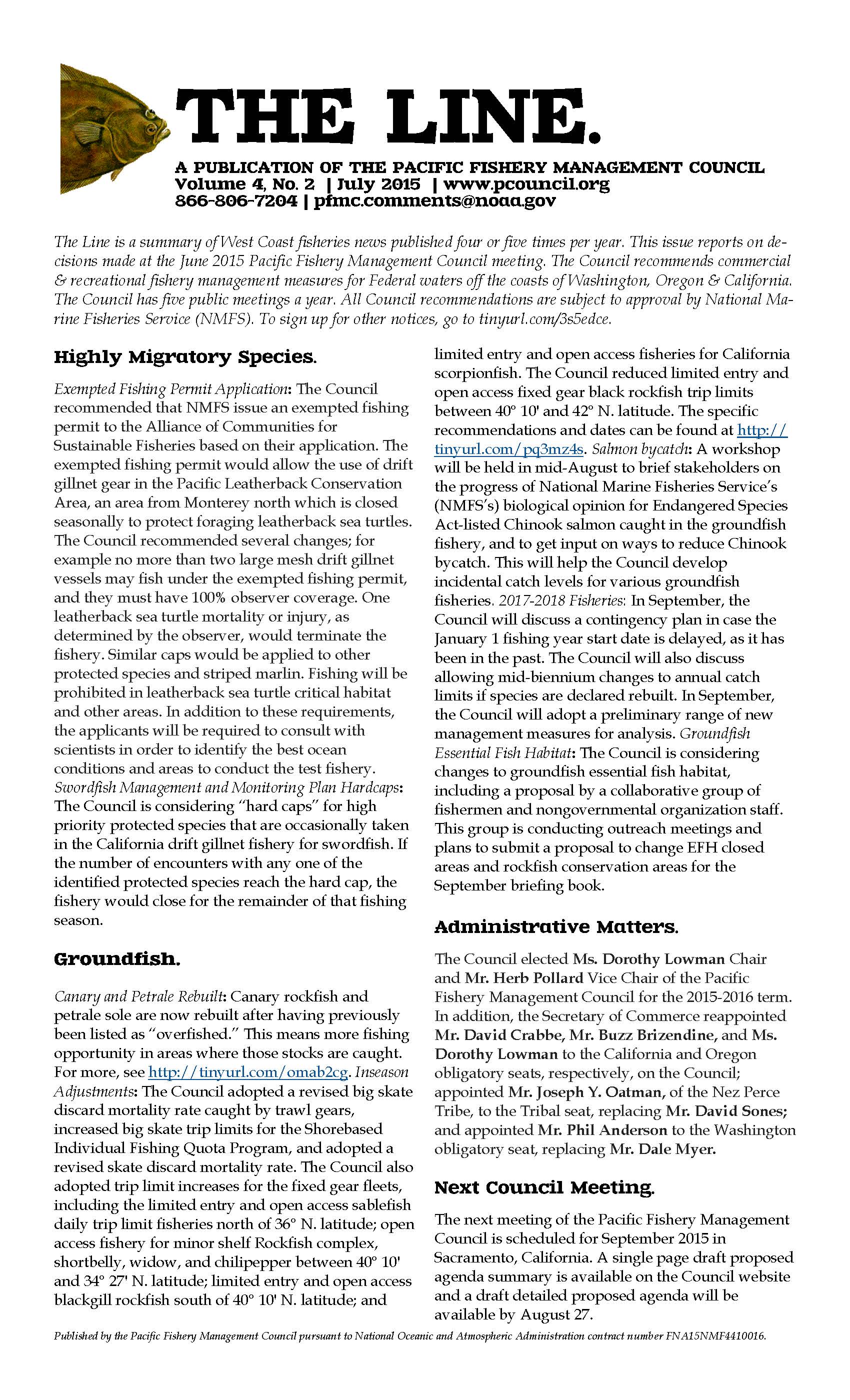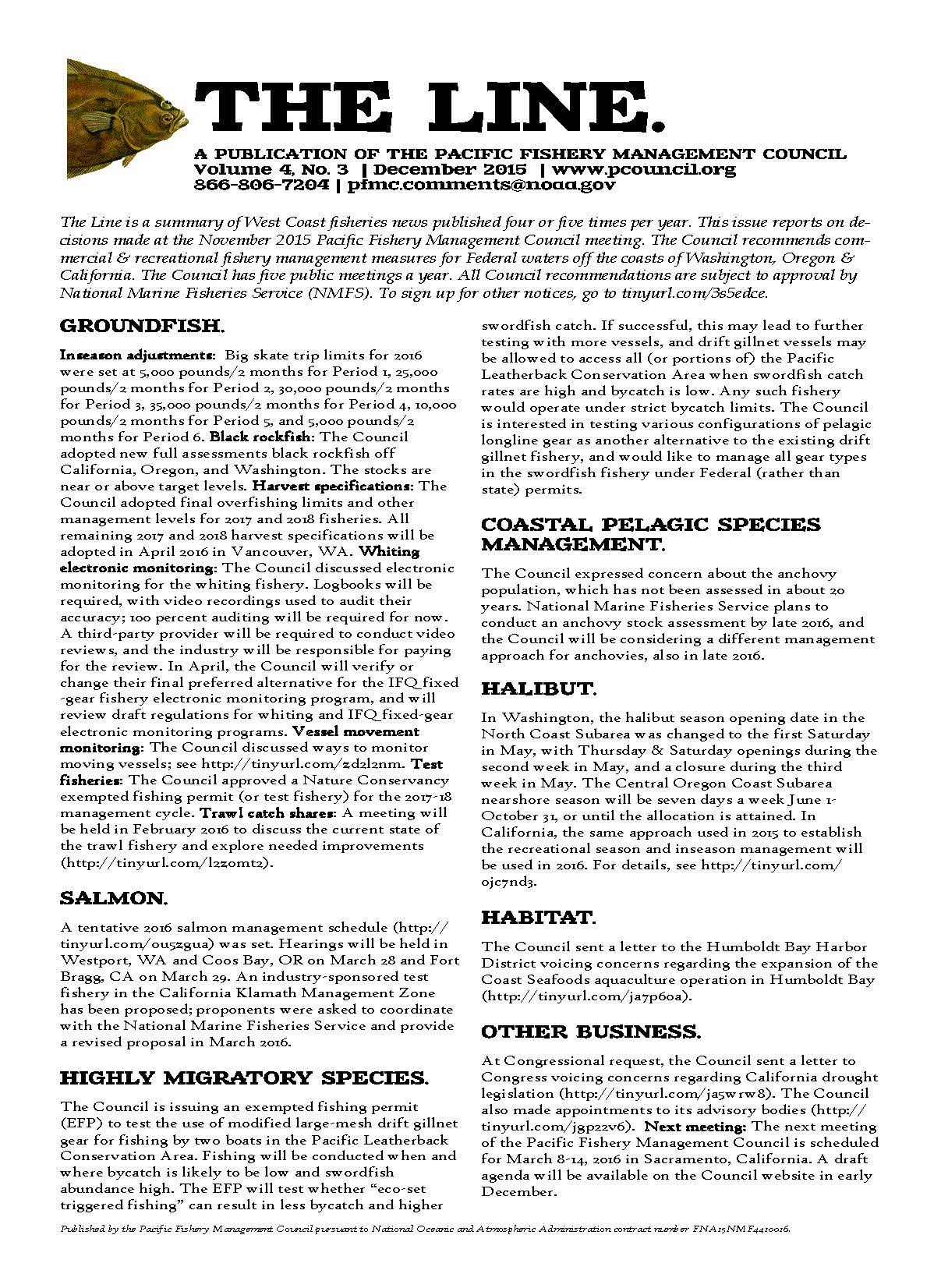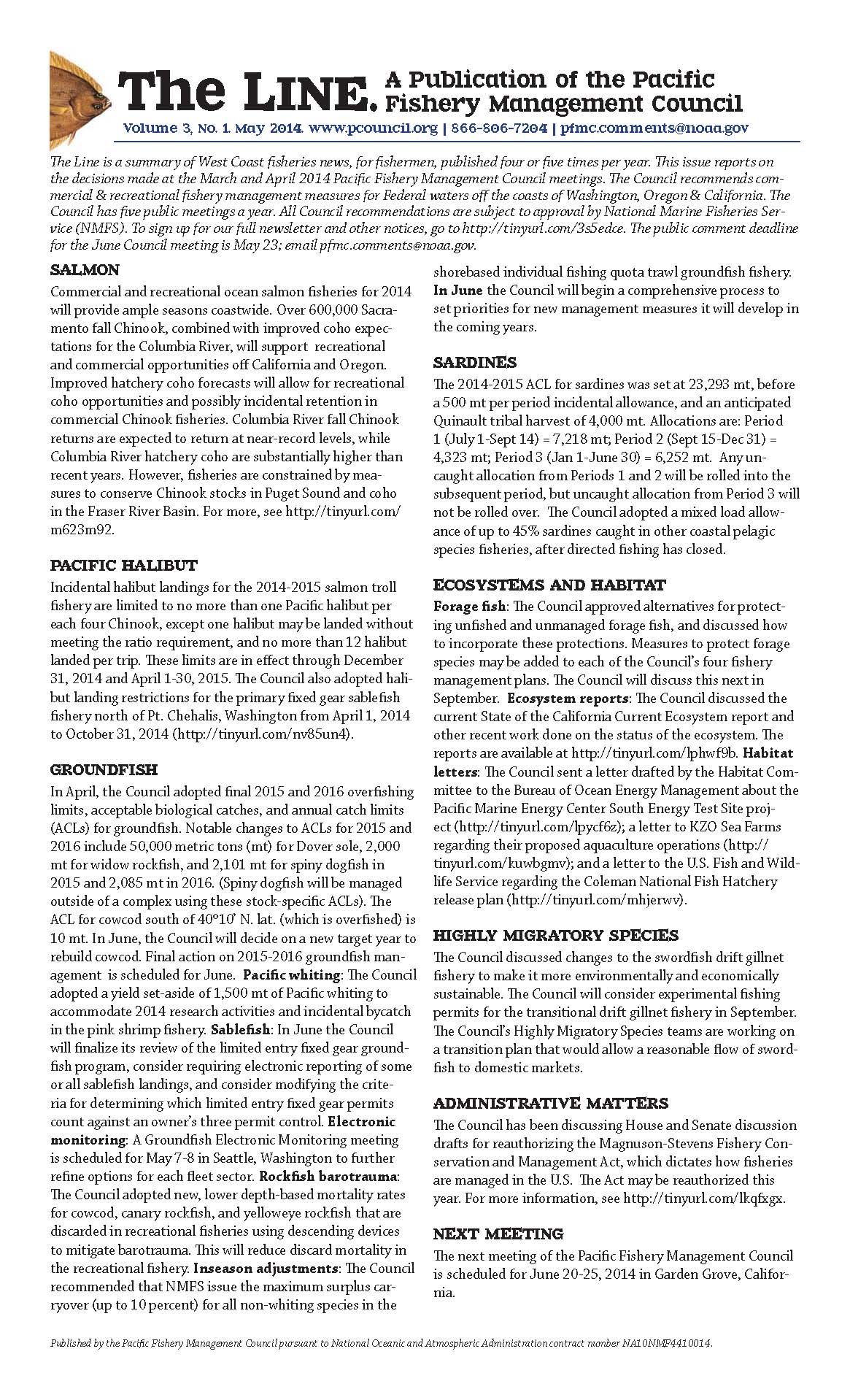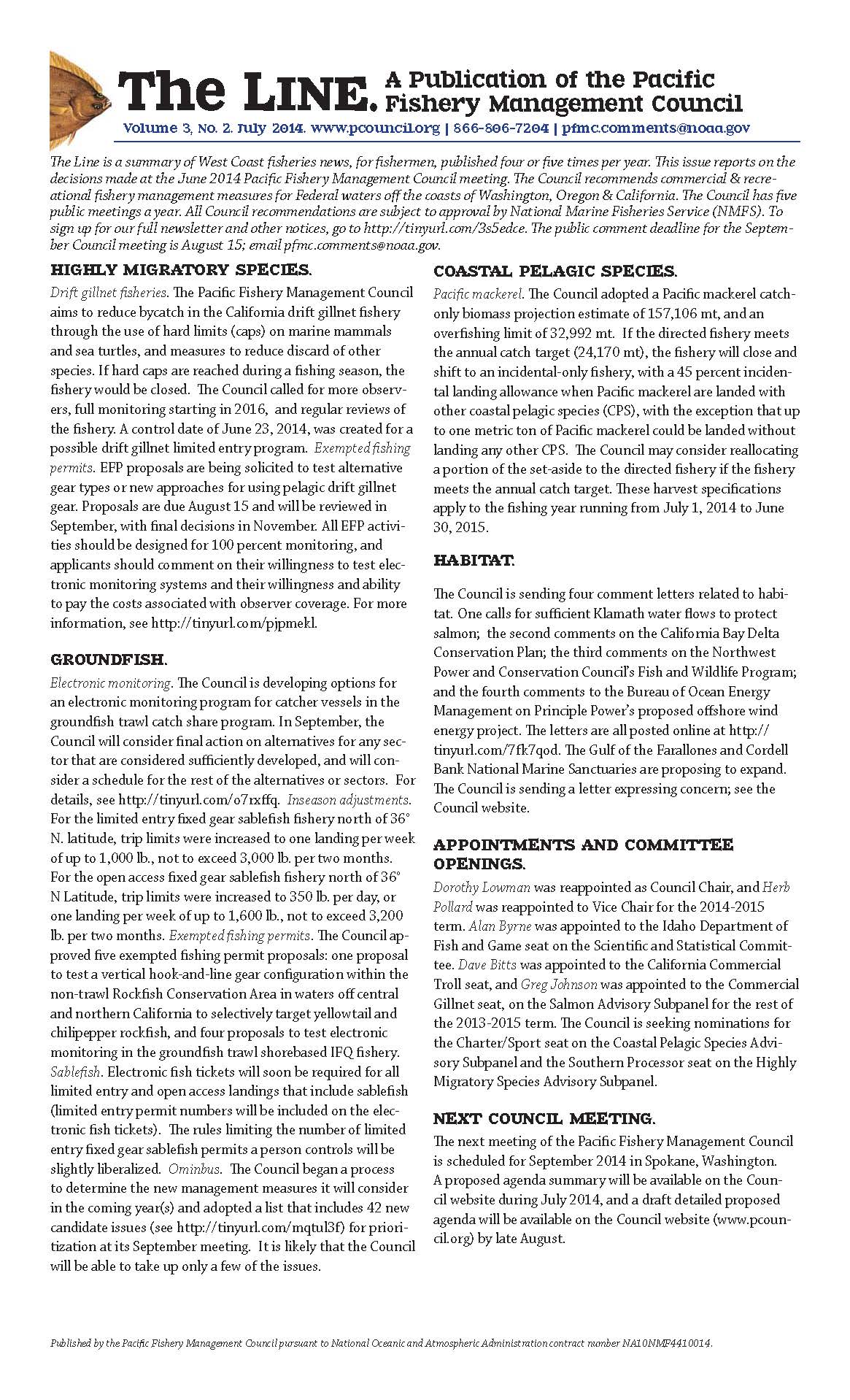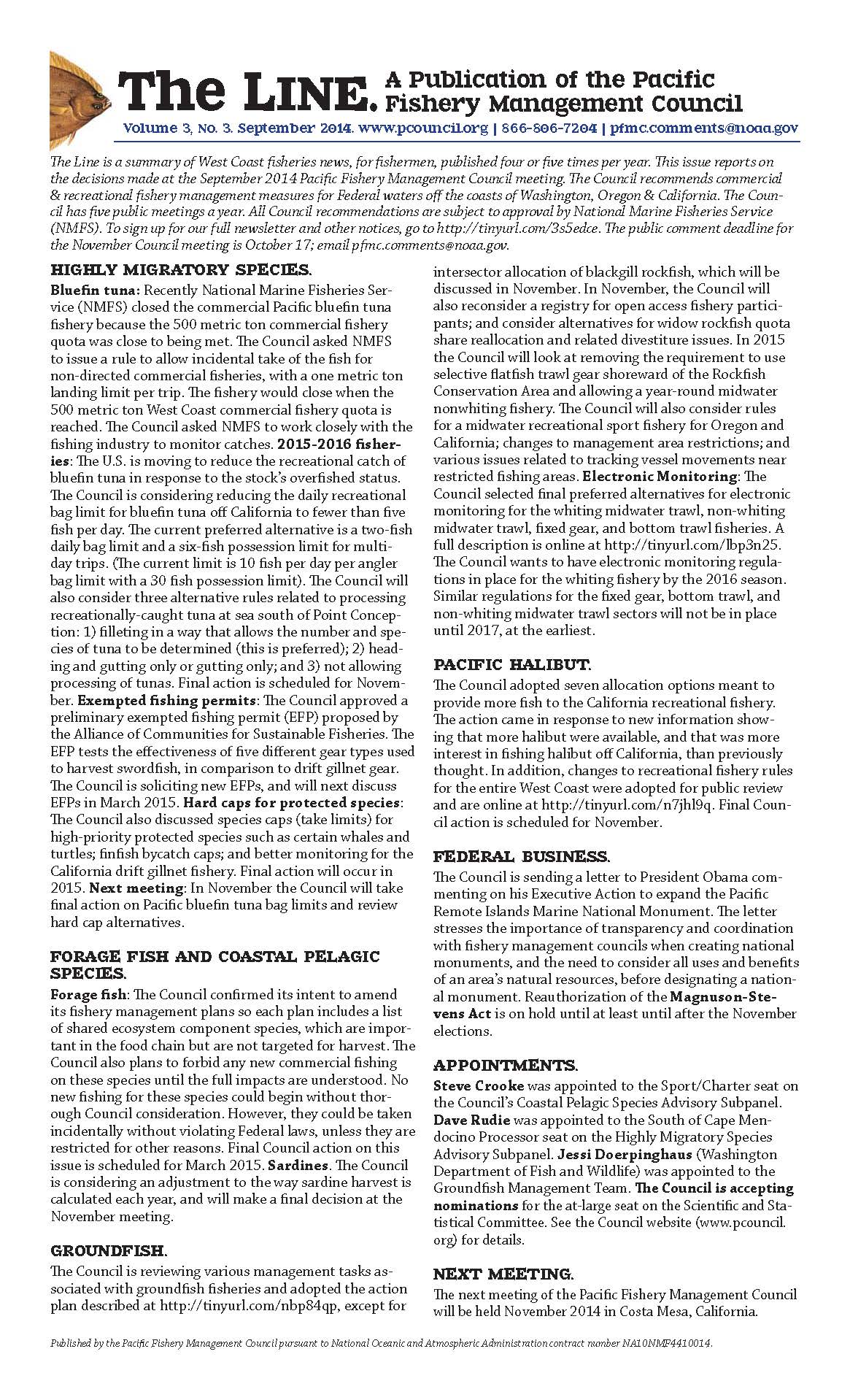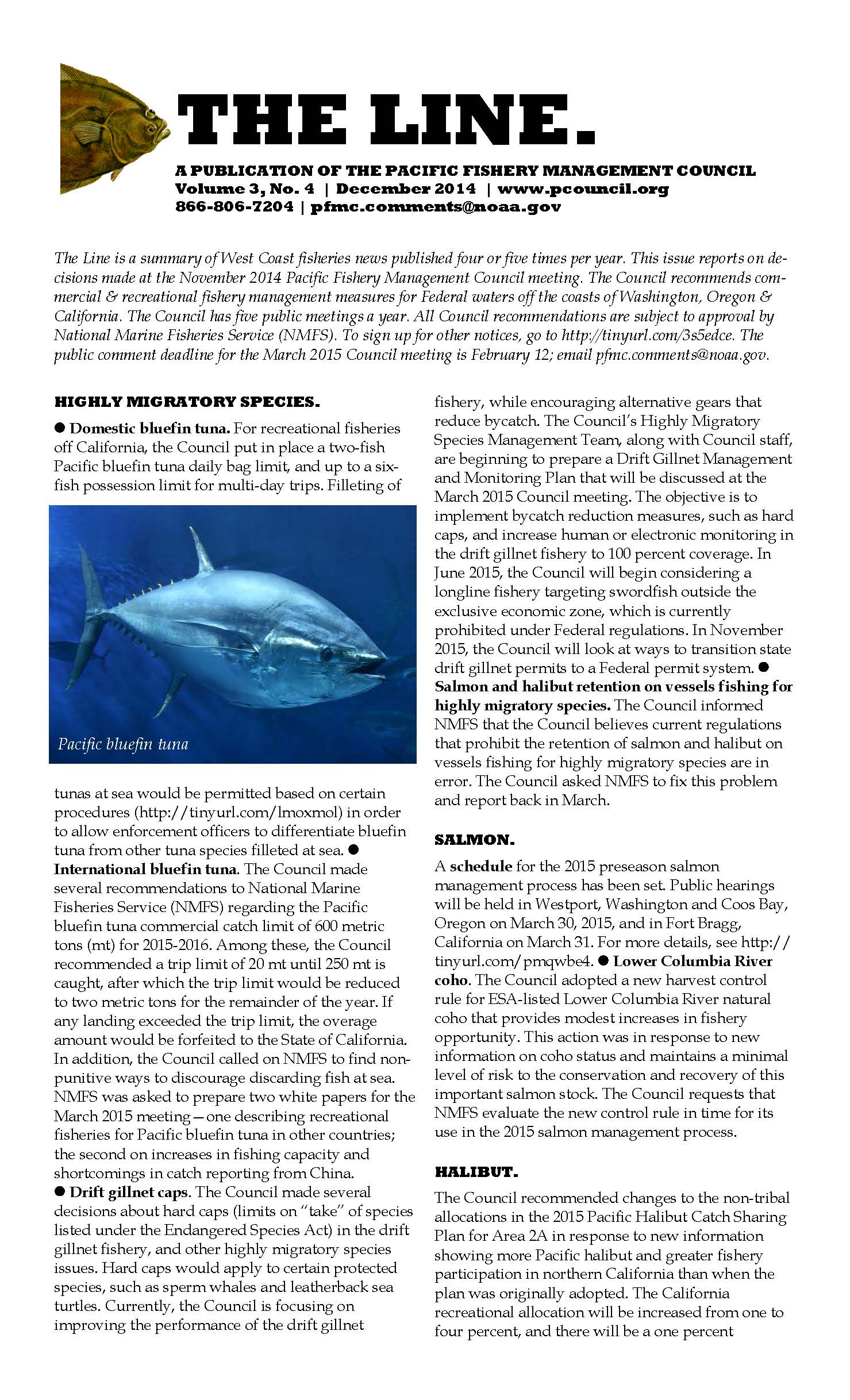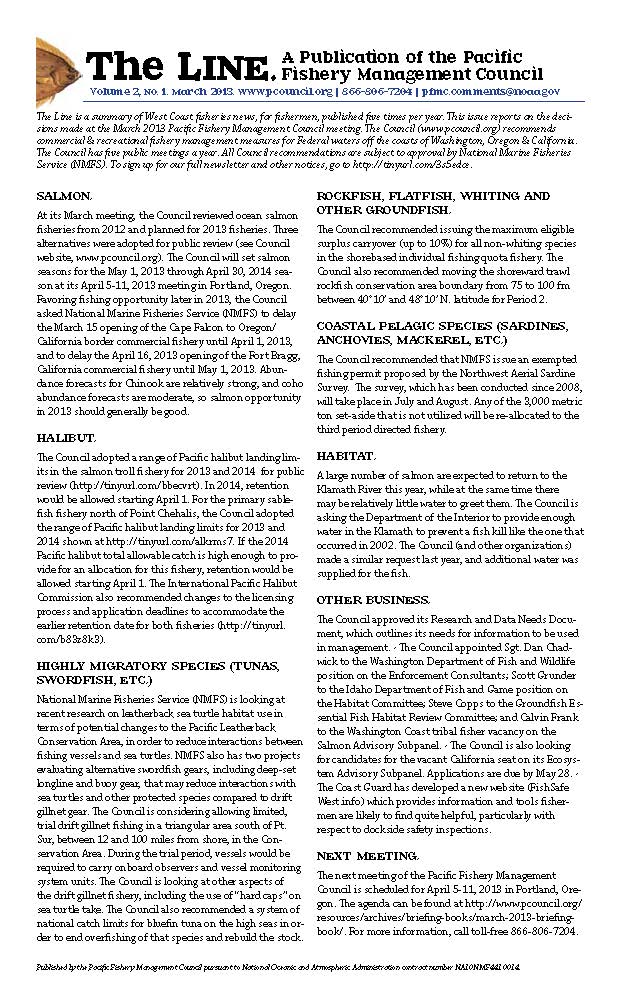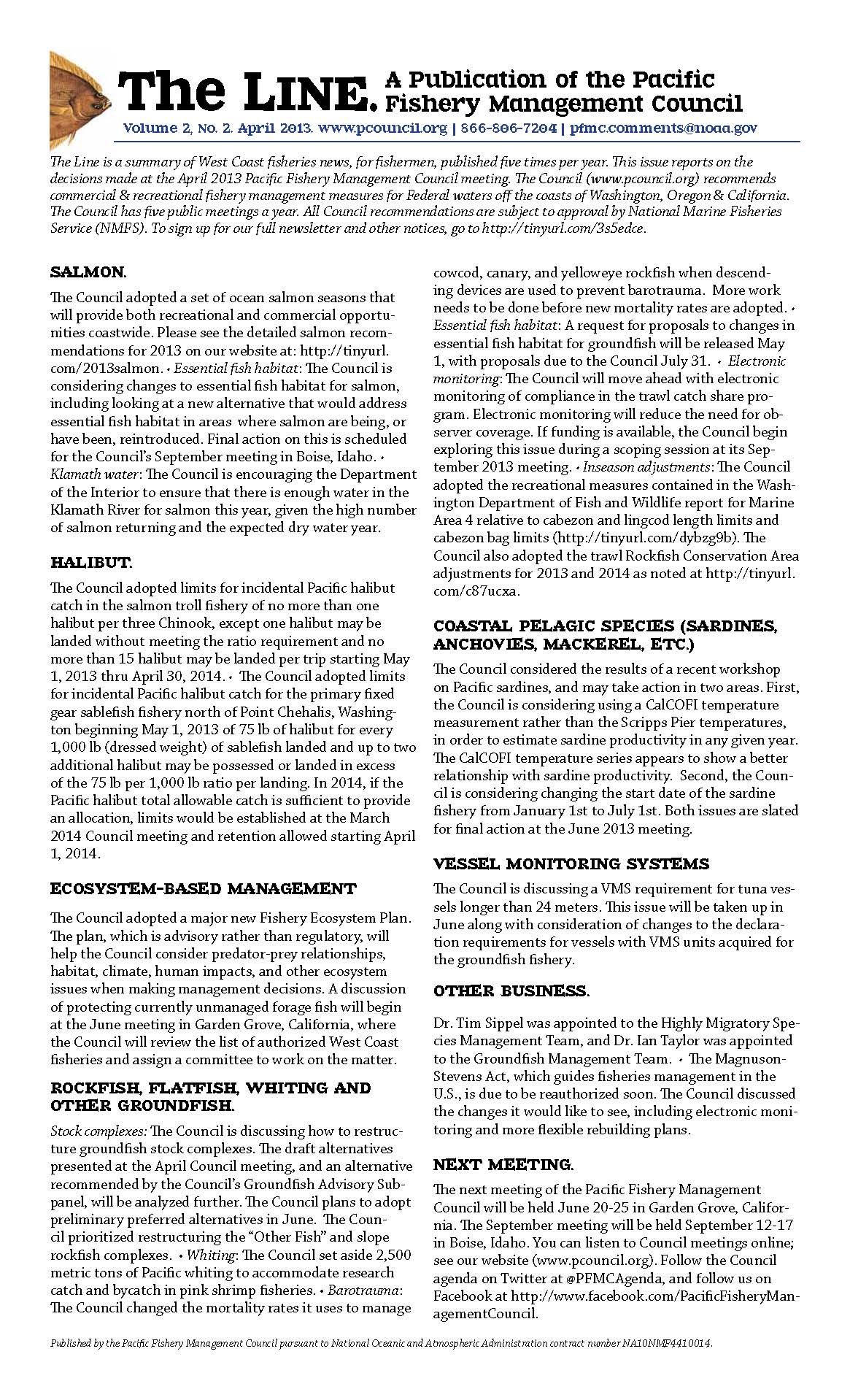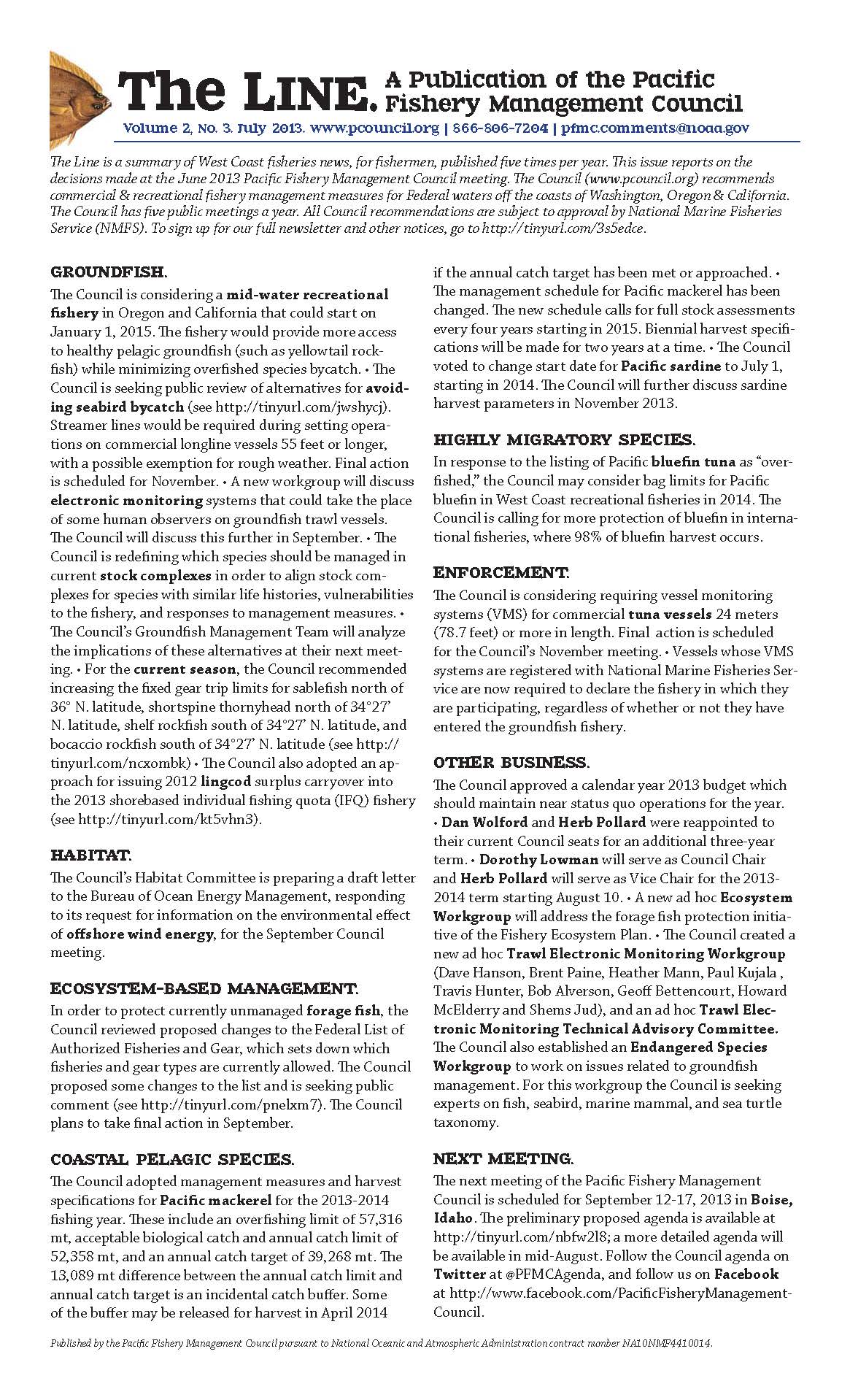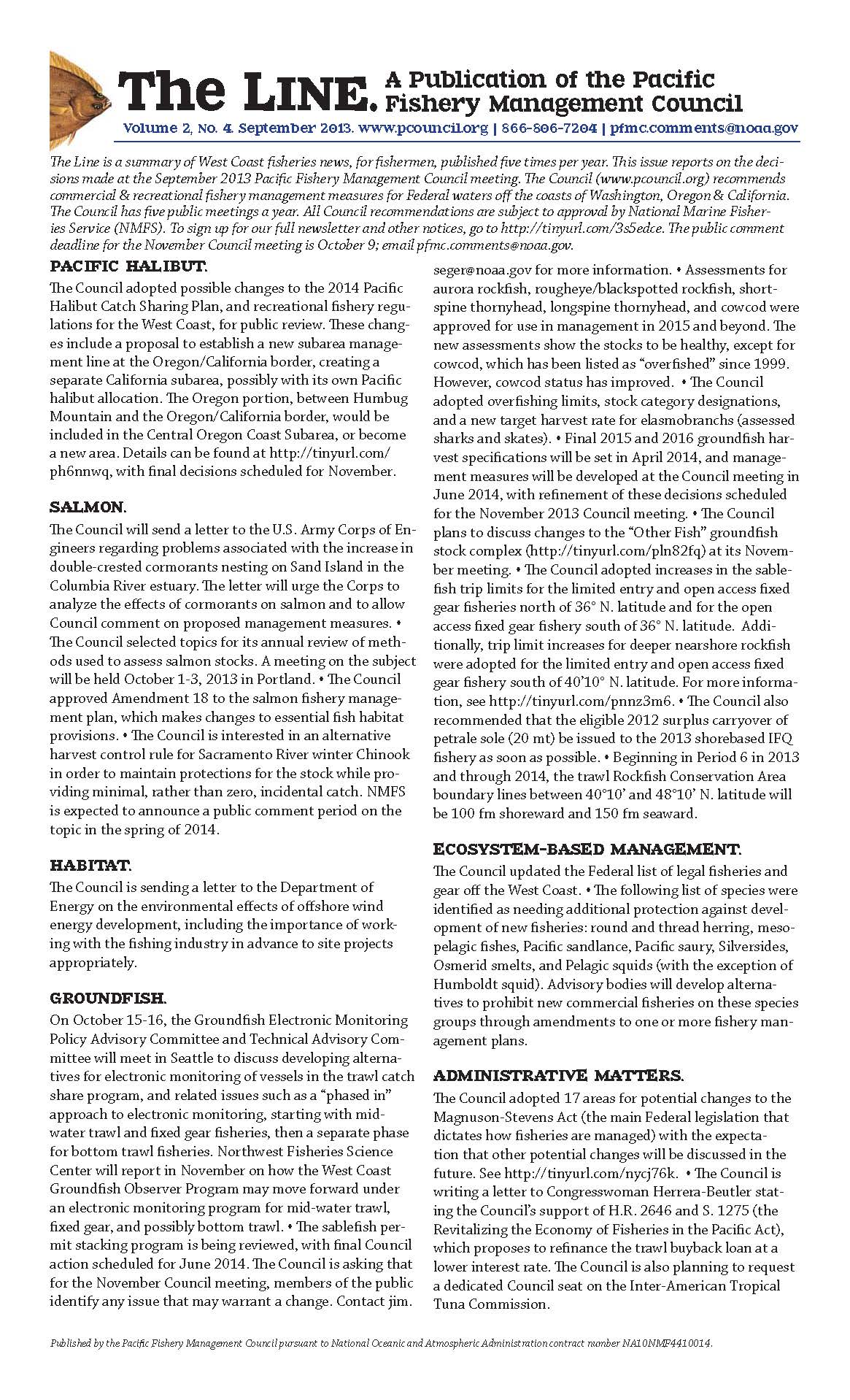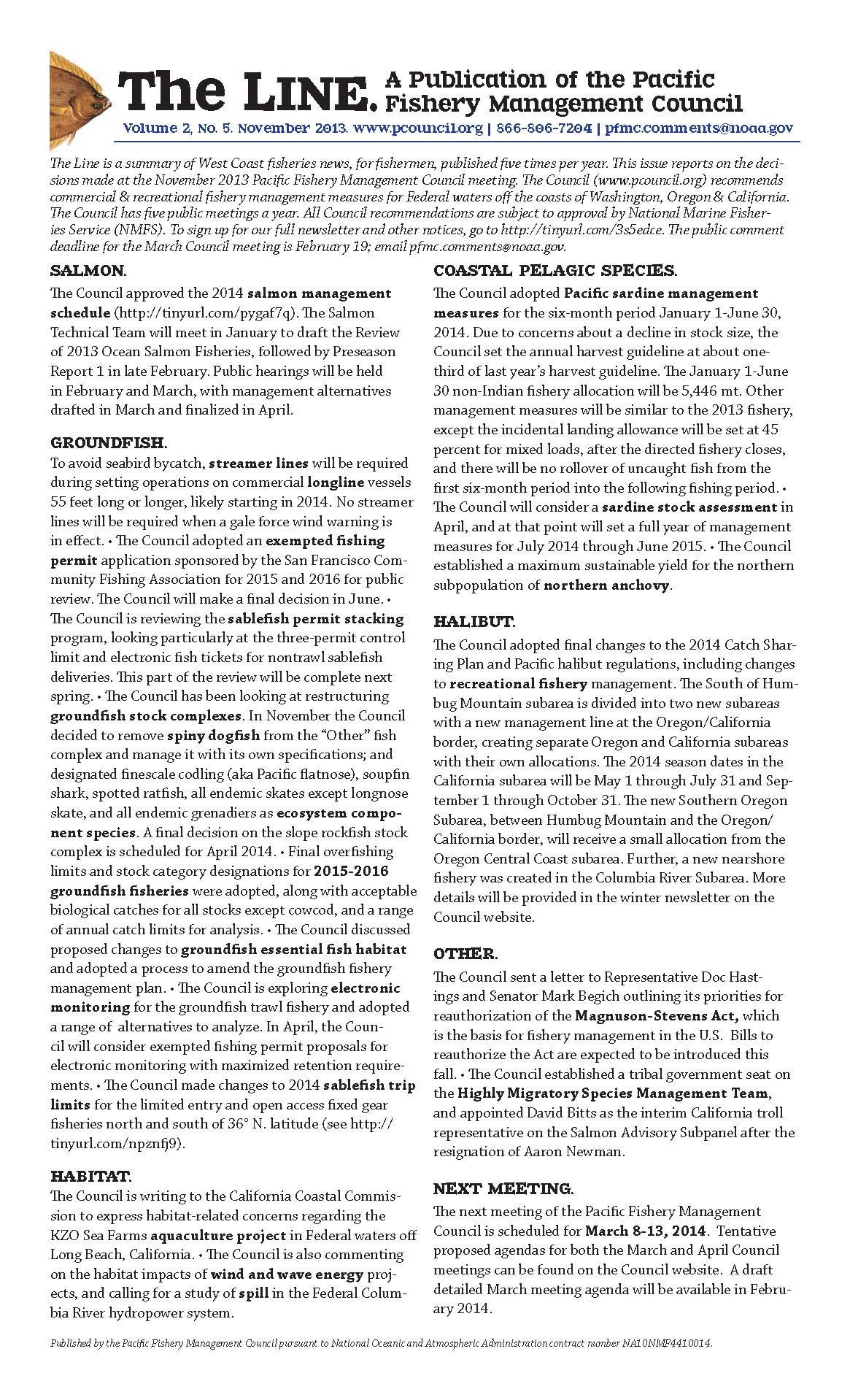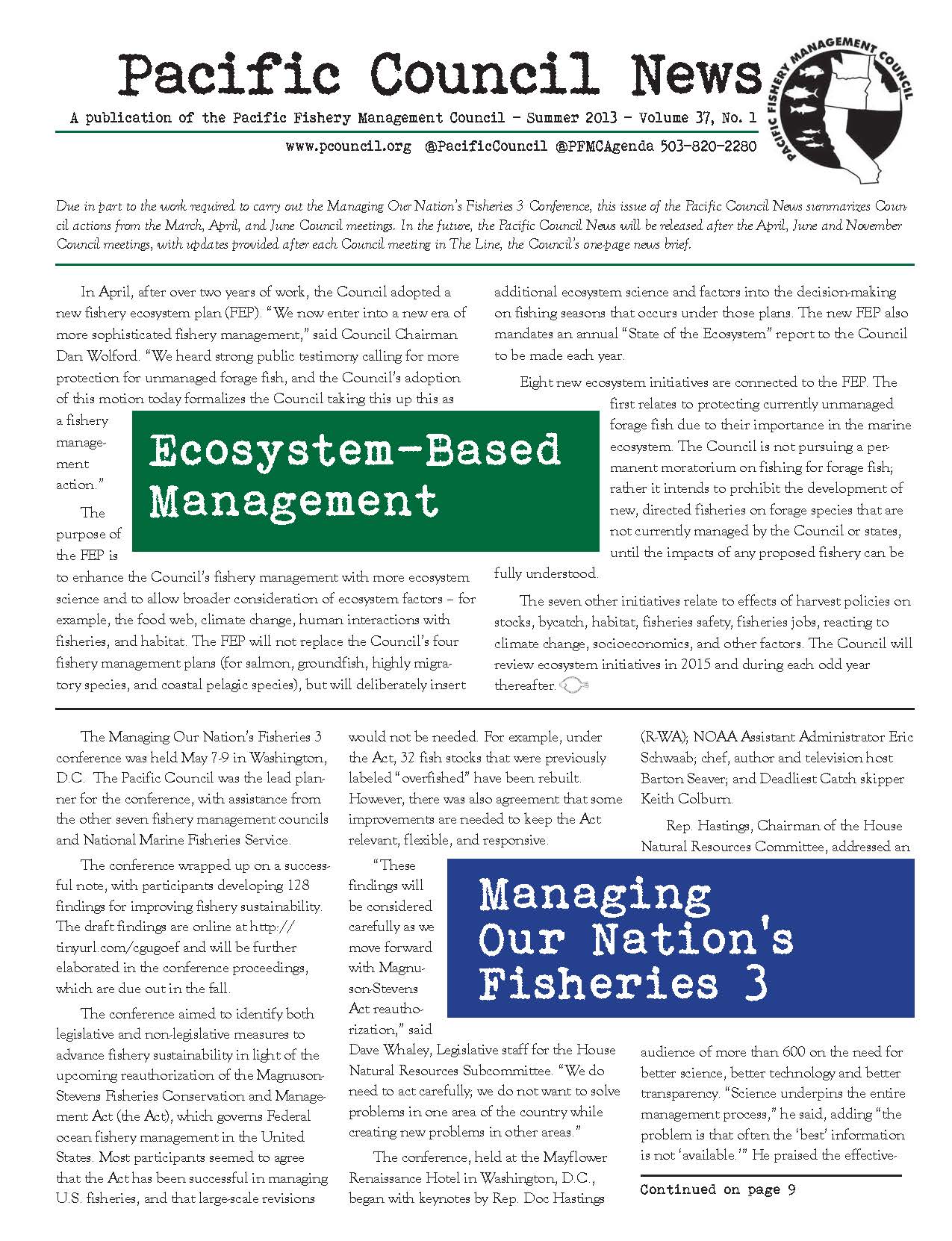In April 2014 the Council heard an update on the Pacific States Marine Fisheries Commission study on electronic monitoring, received a new draft analysis of alternatives, and reviewed exempted fishing permit (EFP) applications. The Council approved preliminary EFPs and asked that applicants consider resubmitting applications in June with certain alternations, mainly limiting the number of vessels involved and requiring up to 100 percent observer coverage. The Council also requested that the EFPs address how halibut viability assessments could be conducted without human observers, with the intention that halibut retention not be permitted.
In May 2014 the groundfish electronic monitoring committees met to discuss initial program alternatives and options that had been adopted for analysis. The Groundfish Electronic Monitoring Policy Advisory Committee (GEMPAC) revised and added some options for further Council consideration.
In June, the Council reviewed the draft analysis and modified some of the regulatory options. The Council also received four revised EFPs and recommended that National Marine Fisheries Service (NMFS) implement them for the whiting midwater trawl, non-whiting midwater trawl, fixed gear, and bottom trawl fisheries in 2015 and 2016. Specifically, the Council recommended the electronic monitoring EFPs be issued to test electronic monitoring in the fisheries on in limited capacity with some additional permit conditions.
In September 2014, the Council reviewed the draft analysis for regulatory development of the electronic monitoring program. It included the new options added by the Council in June. The Council reviewed the GEMPAC report and other advisory body reports, and picked its final preferred alternatives for an electronic monitoring program for all groundfish fisheries operating under the trawl catch shares program, contingent on review before final implementation.
To preserve the conservation and accountability aspects of the individual fishing quota program, the Council told NMFS that the electronic monitoring program must accurately capture discard events (i.e., whether discard has occurred), amount of discard (i.e., volume in weight and size of individual fish), disposition of discard (i.e., consider providing survivability credit for released fish, such as halibut), and rare events (e.g., catch and discard of rebuilding rockfish, by species).
In developing performance standards and accountability measures, the Council recommended NMFS consider the economic incentives to misreport or underreport catches and mortalities of overfished rockfish and Pacific halibut.
The Council noted that adequate enforcement, with strong consequences in place for violations, was key to success in ensuring compliance with the electronic monitoring program.
The preferred alternatives and options were tested using the EFPs. Testing began in the spring of 2015 and continued through 2018.
